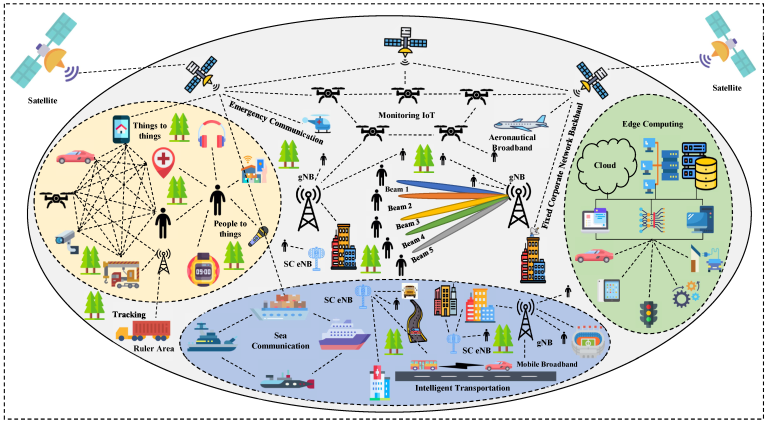The Role and Importance of 5G Device Chipsets
telcomatraining.com – 5G device chipsets form the backbone of modern connectivity, enabling the high-speed data transmission and low-latency communication required by the fifth-generation network. These chipsets power everything from smartphones and IoT devices to base stations, revolutionizing industries with their advanced capabilities. Below, we explore the types, functionalities, and benefits of 5G chipsets, emphasizing their critical role in modern technology.
Types of 5G Chipsets
- Radio Frequency Integrated Circuits (RFICs):
RFICs are crucial for handling wireless communication between devices and base stations. Operating across various frequency bands such as sub-6 GHz and millimeter-wave (mmWave), these chips ensure seamless signal transmission in diverse environments. - System-on-Chips (SoCs):
SoCs integrate multiple components, including a central processing unit (CPU), graphics processing unit (GPU), modem, and other modules, into a single chip. These compact designs power 5G smartphones, tablets, and portable devices, ensuring efficient and high-performance functionality. - Application-Specific Integrated Circuits (ASICs):
Designed for specialized tasks, ASICs enhance performance and efficiency in 5G applications. These chips are tailored to meet the demands of specific use cases, such as network optimization or advanced data processing. - Cellular Integrated Circuits (Cellular ICs):
Cellular ICs manage communication protocols and standards, ensuring devices remain compatible with 5G networks while maintaining stable and efficient connectivity. - Millimeter-Wave (mmWave) ICs:
Operating in the high-frequency mmWave spectrum (e.g., 24-30 GHz), these chips enable ultra-fast data rates. They are particularly beneficial in areas requiring high bandwidth and low latency, such as urban centers and industrial hubs.
Analog Devices (ADI) and Its 5G mmWave Chipset
Analog Devices, Inc. (ADI) has developed a cutting-edge 5G mmWave chipset, providing a comprehensive solution for modern network needs.
Key Components of ADI’s 5G mmWave Chipset
- ADMV4821 Dual-/Single-Polarization Beamformer IC:
This IC is pivotal for beamforming, a technology that enhances signal directionality and coverage. - ADMV4801 Single-Polarization Beamformer IC:
Optimized for single-polarization applications, this component supports diverse 5G deployment scenarios. - ADMV1017 mmWave Up/Down Frequency Conversion (UDC) IC:
This IC manages frequency conversion, a critical function in high-frequency communication.
These components comply with 3GPP 5G New Radio (NR) standards, including bands n261, n257, and n258. They offer unparalleled channel density, flexibility, and superior equivalent isotropically radiated power (EIRP), ensuring extended radio range and reliable network performance.
Benefits of ADI’s 5G Chipset Solution
- Simplified Design:
By integrating multiple components into a cohesive solution, ADI reduces the complexity of designing next-generation cellular network infrastructure. - Enhanced System Flexibility:
The chipset supports both single- and dual-polarization deployments, making it versatile enough to cater to a wide range of 5G use cases, from consumer devices to industrial applications. - Accelerated 5G Deployment:
ADI’s solution minimizes component count and streamlines the design process, allowing network providers to roll out 5G services more efficiently.
Broader Impacts of 5G Chipsets
The advancements in 5G chipsets not only improve connectivity but also pave the way for technological innovation. From autonomous vehicles and smart cities to telemedicine and virtual reality, the capabilities enabled by these chipsets are transformative.
Conclusion
5G device chipsets are integral to the global shift toward faster, more reliable connectivity. Innovations like ADI’s 5G mmWave chipset highlight the potential of these technologies to simplify network design, improve performance, and accelerate deployment. As 5G continues to evolve, these chipsets will remain at the forefront, driving progress across industries and enabling the next wave of technological advancements.







